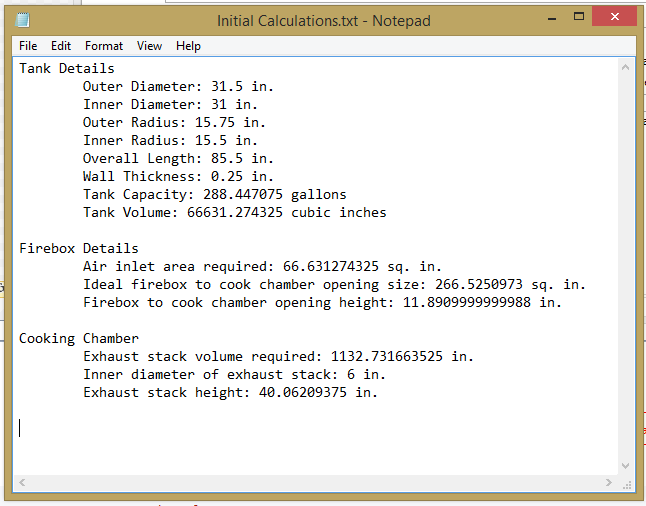So, I have my 250 gallon propane tank, it's had it's valves removed for 2-3 years. I haven't calculated the firebox size yet, but am working on it.
I'm just looking to have a very consistent smoker, that I can put things in, and know that hotspots are reduced. Based on my research here, it seems best to either build a good smoker, or a good pit. I'm more interested in the smoker portion. I like the idea of having a warming rack over the firebox, that I've seen a couple of times (made easier by my propane tank not having the super rounded sides like most new tanks).
I plan to have my first steps be to cut the doors, and then mount it in a trailer configuration, to make moving it around easier, since I don't have great tools to lift it without help.
From that point, I'd like to start working on the firebox, reverse flow plate, and cooking grates. I'd like to be able to use it to smoke the gamut of meats (chicken, brisket, ribs, you name it). Today, I do this on my small vertical water smoker. Does a decent job, but has a hard time maintaining temperatures in the winter, and in the summer can get too hot.
I'm looking at my options for building the trailer portion. My brother in law found a decent axle for his smoker/pit, but thus far I haven't come across anything that the seller doesn't want too much money for.
Here in Austin, we have a Northern Tools, so I can get things shipped to the store for free. I looked into building the axle up from parts, but the kits seemed a better deal. I have looked at the following kits:
Does this seem a good route to go, assuming I can't find a good deal on an existing axle setup?
I have seen posts talking about buying a full trailer for $450, but it seems anything in that range has small 12" tires, and not the same weight range.
Thanks!
I'm just looking to have a very consistent smoker, that I can put things in, and know that hotspots are reduced. Based on my research here, it seems best to either build a good smoker, or a good pit. I'm more interested in the smoker portion. I like the idea of having a warming rack over the firebox, that I've seen a couple of times (made easier by my propane tank not having the super rounded sides like most new tanks).
I plan to have my first steps be to cut the doors, and then mount it in a trailer configuration, to make moving it around easier, since I don't have great tools to lift it without help.
From that point, I'd like to start working on the firebox, reverse flow plate, and cooking grates. I'd like to be able to use it to smoke the gamut of meats (chicken, brisket, ribs, you name it). Today, I do this on my small vertical water smoker. Does a decent job, but has a hard time maintaining temperatures in the winter, and in the summer can get too hot.
I'm looking at my options for building the trailer portion. My brother in law found a decent axle for his smoker/pit, but thus far I haven't come across anything that the seller doesn't want too much money for.
Here in Austin, we have a Northern Tools, so I can get things shipped to the store for free. I looked into building the axle up from parts, but the kits seemed a better deal. I have looked at the following kits:
- Reliable 2,000-Lb. Capacity Complete Axle Kit — 67in. Hubface, 55in. Spring Center, 5-Bolt Pattern
- $200
- Reliable Axle Kit — 3500-Lb. Capacity
- $270
Does this seem a good route to go, assuming I can't find a good deal on an existing axle setup?
I have seen posts talking about buying a full trailer for $450, but it seems anything in that range has small 12" tires, and not the same weight range.
Thanks!
Last edited:










